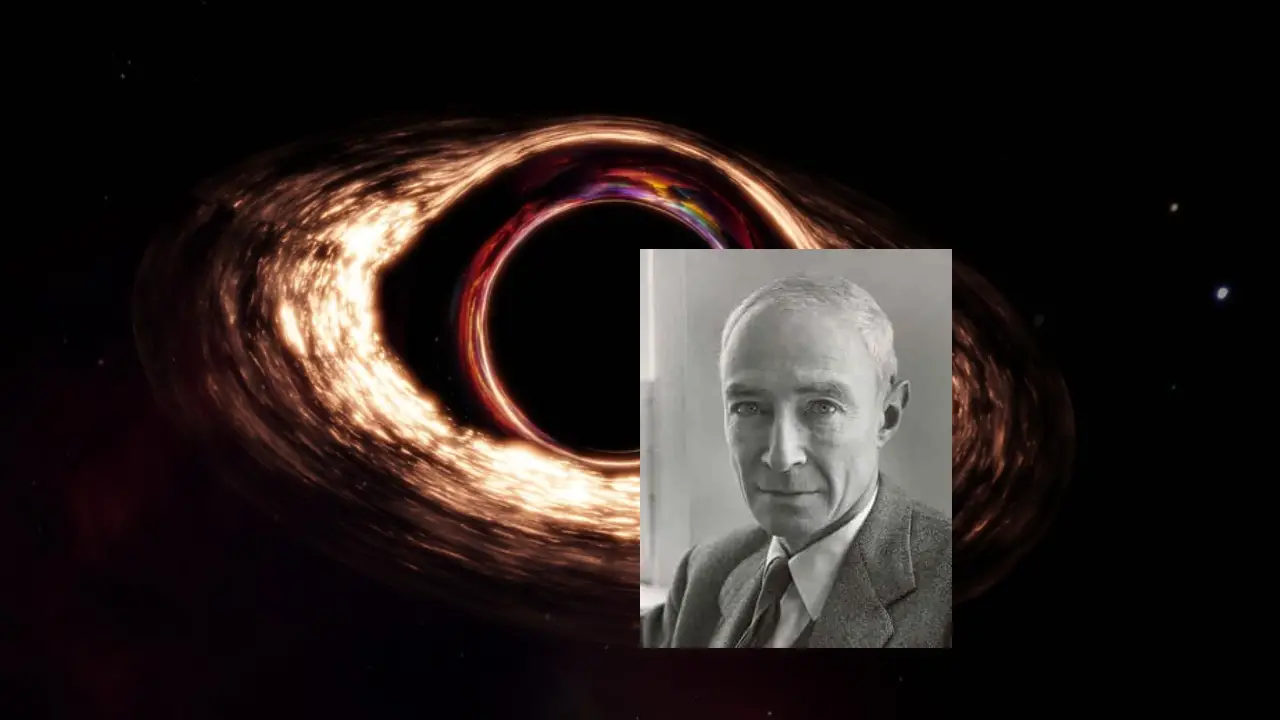The name J. Robert Oppenheimer is one that is well known for both the scientific advancements he made and the historical controversies he was involved in. Oppenheimer, who is frequently referred to as “the father of the atom bomb,” played an essential part in the creation of nuclear weapons during World War II. His contributions to science, on the other hand, are not limited to the field of atomic armament. Oppenheimer was a talented theoretical physicist whose early work concentrated on quantum physics and the mysteries of black holes. He is credited with helping to propose the general theory of relativity.
1939 saw the introduction of Oppenheimer’s ground-breaking collapse model, which attempted to explain the origin of black holes. When we were living in those times, our knowledge of these heavenly bodies was yet in its infant stages. When first conceived, black holes existed only in the realm of speculation, and scientists struggled to comprehend how such entities might come into being.
In Oppenheimer’s collapse model, it was hypothesized that once a huge star had depleted its supply of nuclear fuel, it would be unable to resist the pull of gravity any more. Because of this, it would go through the process of gravitational collapse, which would result in the core being compressed to an infinitely dense point known as a singularity. The theory of general relativity developed by Albert Einstein served as the foundation for this idea. In that theory, gravity was defined as the bending of spacetime that was brought about by the interaction of mass and energy.
The analytical tractability of Oppenheimer’s model and its capacity to describe a wide variety of characteristics of a sputtering star are the primary reasons for the model’s significance. This mathematical technique provided scientists with a framework to research the mysterious nature of cosmic things like black holes, which allowed them to investigate the complicated dynamics involved in the generation of black holes.
It is interesting to note that history has demonstrated that Oppenheimer was incorrect in several areas. Subrahmanyan Chandrasekhar had already made a great discovery prior to the work that Oppenheimer did, which was eight years earlier. He discovered that a star’s core would turn into a white dwarf if it had a mass that was less than 1.4 times that of the sun after the star had completely burned out. Nuclear fusion is triggered when the gravitational collapse of stars with a mass that is larger than 1.4 times that of the sun. This results in the production of heavier elements such as nitrogen, oxygen, and carbon.
Oppenheimer’s quest was to understand what happened to stars that had masses greater than the critical threshold of 1.4 solar masses. He was interested in tracing the route of gravitational collapse and discovering what takes place inside a star when it is subjected to such powerful forces.
Karl Schwarzschild, a German physicist who was serving on the front lines of World War I at the time, derived a perfect mathematical solution to Einstein’s theory of general relativity around the same time. In this solution, he found two sites that are now known as singularities and which were locations where the fabric of spacetime itself appeared to break down. Later, it was realized that these singularities are located at the center of black holes, which is a place in which the physical rules that we are familiar with fail to function.
Oppenheimer was going headfirst into the question of how such singularities could give rise to black holes while Einstein was preoccupied with understanding and possibly eliminating these gravitational singularities from his theory. Additionally, one of his coworkers, John Snyder, postulated that an observer located on the surface of a star in the process of collapsing would witness a phenomenon known as “spaghettification.” This peculiar phenomena takes place when an object is subjected to severe tidal pressures as a result of the gravitational pull, which causes the thing to be stretched out into a long and thin shape like spaghetti.
Oppenheimer and his colleagues were the first scientists to fully comprehend the physical process by which a black hole comes into being. Through their combined efforts, a considerable advancement was made in both the understanding of the physics of black holes and the complex relationship that exists between gravity and spacetime.
Oppenheimer’s reputation is burdened by the fact that he was intimately involved in the process of developing the atomic bomb, despite the fact that his work on black holes laid the groundwork for future research in the field of astrophysics. It cannot be denied that he made significant contributions to the top-secret Manhattan Project, which was an initiative of the United States government to develop nuclear weapons. The successful test of the first atomic bomb in 1945 represented a turning moment in human history. It also led to the use of atomic bombs on the Japanese cities of Hiroshima and Nagasaki, which hastened the end of World War II. Those weapons were responsible for the deaths of hundreds of thousands of people.
It is important not to let the contentious aspects of Oppenheimer’s life and career obscure the significant impact he had on the fields of physics and astronomy. His early discoveries about black holes are still important today and continue to have an impact on research being conducted in related domains. The fact that J. Robert Oppenheimer went from deciphering the secrets of the cosmos to changing the course of history with the atomic bomb serves as a useful reminder of the complicated and multidimensional nature of scientific research and the implications of such discovery. When we think back on J. Robert Oppenheimer, we can’t help but acknowledge the dual nature of his legacy as well as the enduring relevance of the scientific contributions he made.
![]()
